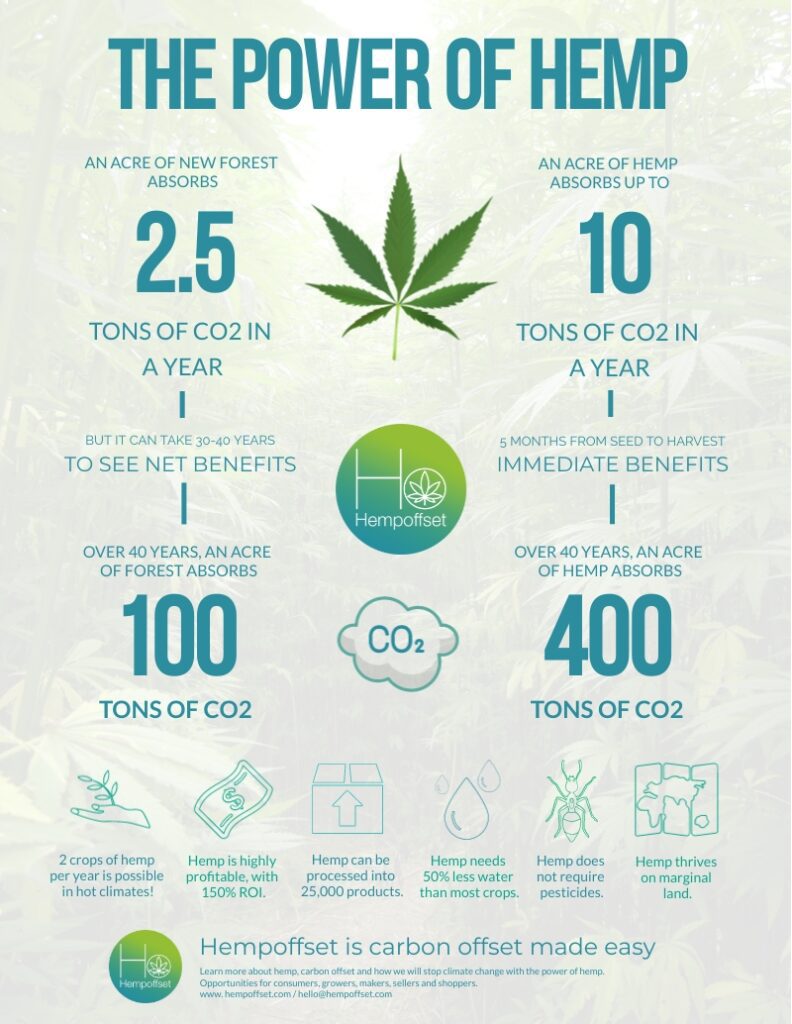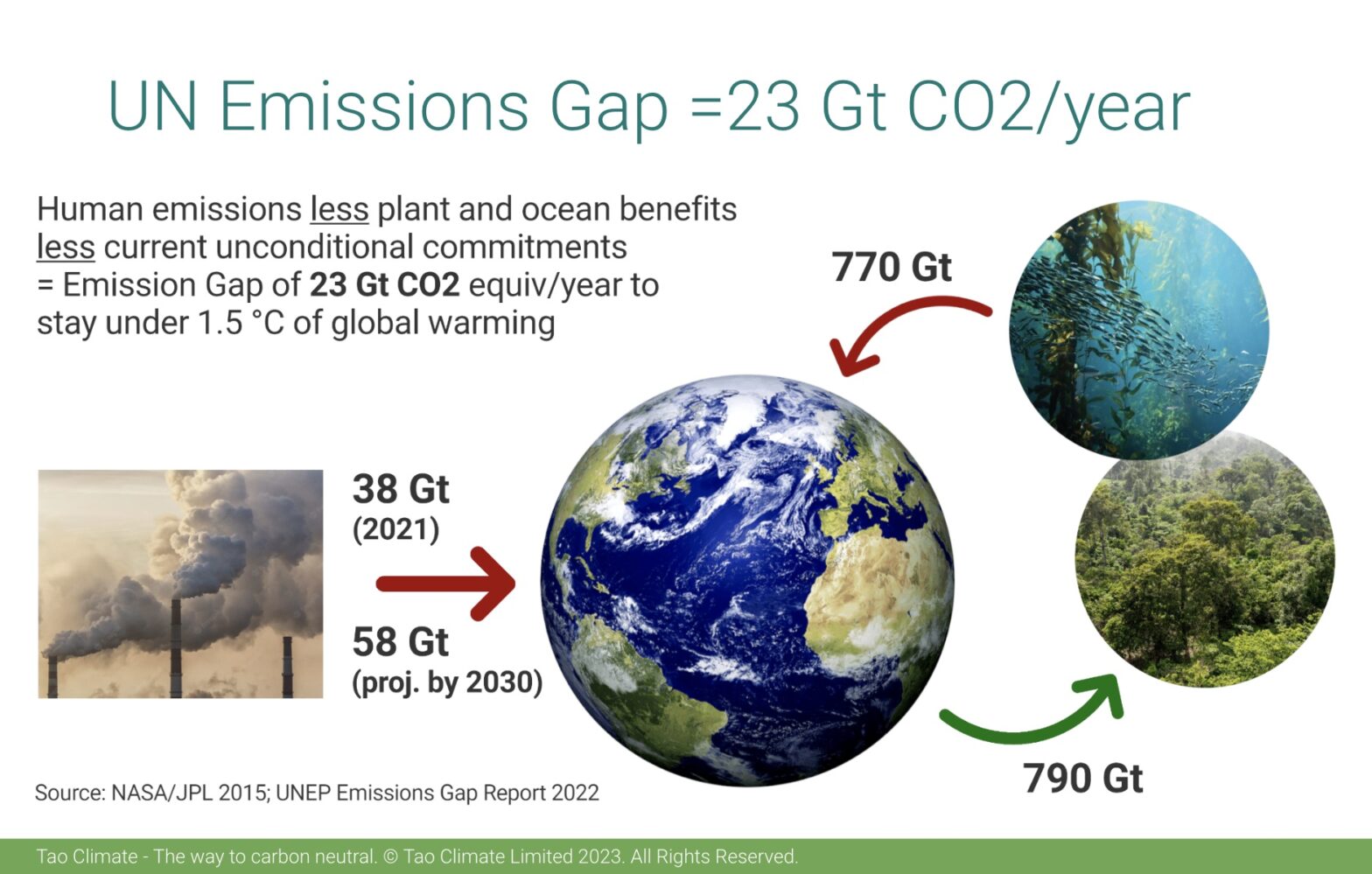The science bit
We explain the science behind carbon offset and show why hemp is such a powerful tool in our fight against climate change.
What is climate change and what does global warming have to do with it?
Climate change refers to the long-term shifts in the average weather patterns that have come to define Earth’s local and global climates. The main cause of recent climate change is human activities, primarily the burning of fossil fuels (coal, oil, and natural gas) which releases large amounts of carbon dioxide (CO2) and other greenhouse gases into the atmosphere.
The greenhouse effect refers to the warming of the Earth’s surface and lower atmosphere due to the presence of these gases in the atmosphere. These gases trap heat from the sun and warm the planet, which is a natural process that makes life on Earth possible. However, the burning of fossil fuels has led to a significant increase in the levels of greenhouse gases, causing the Earth’s temperature to rise at an unprecedented rate. This phenomenon is referred to as global warming.
The Intergovernmental Panel on Climate Change (IPCC) has stated with high confidence that the main cause of global warming is the increase in greenhouse gases, mainly CO2, caused by human activities. This conclusion is based on multiple lines of evidence, including observations of increasing global temperature, melting of glaciers and sea ice, and rising sea levels.
The effects of climate change are widespread and far-reaching. They include more frequent and intense heat waves, increased risk of drought and wildfires, and more severe storms. Climate change is also causing the oceans to warm, leading to coral bleaching and the death of marine species. In addition, the melting of polar ice caps and glaciers is causing the sea level to rise, which is a threat to coastal communities and low-lying island nations.
To mitigate the effects of climate change, it is important to reduce greenhouse gas emissions and shift to a more sustainable energy system. This can be achieved through the use of renewable energy sources such as solar and wind power, energy efficiency measures, and the development of carbon capture and storage technologies. Governments and individuals can also play a role by reducing their carbon footprint through actions such as using public transportation, eating a plant-based diet, and reducing waste.
Climate change and the greenhouse effect are significant global issues that require immediate action. The science is clear that human activities are the main cause of recent climate change, and the impacts of this phenomenon are far-reaching and potentially devastating. By taking action now to reduce greenhouse gas emissions and shift to a more sustainable energy system, we can help to ensure a safe and livable planet for future generations.
UN Emissions Gap
The UN calculates that we need to remove 23 Gigatonnes of CO2e from the atmosphere each year this decade if we are to prevent the global temperature from rising above 1.5°C. A gigatonne is one billion tonnes, which equates to around 3 tonnes of CO2e per person in the world.
What’s the greenhouse effect?

Burning fossil fuel, such as oil, petrol, diesel, gas or natural gas, creates greenhouse gases (GHGs), mainly carbon dioxide but also methane and nitrous oxide. When these greenhouse gases gather in the atmosphere, they block solar energy – heat – from escaping back into space. So the atmosphere gets hotter, more energetic, and more capable of intense weather events and enormous hurricanes. Critically, water vapour itself is a greenhouse gas. The effect of these gases trapping heat in the atmosphere is the greenhouse effect. Just like a greenhouse in a garden.
What’s the alternative to global warming and climate change, and why don’t we embrace it?
Renewable energy, such as solar and wind, creates the power to run an electricity-generating station or to charge an electric car, but without emitting any greenhouse gases. It really is that simple. A key blocker is that we are lectured about the high cost of renewables. Take that one with a pinch of salt. It’s estimated that, in 2015, global fossil fuel subsidies were $5.3 trillion, yes 5.3 thousand billion dollars, which represented 6.5% of global GDP. So, while Elon Musk and China make great progress driving down the cost of solar, there is not a level playing field while big oil still gets corporate welfare handouts from friends in high places. As well as the US and most Middle Eastern countries, the EU is also guilty of subsidising the fossil fuel industry.
Photosynthesis and why plants are awesome – they make oxygen
Photosynthesis is pretty incredible when you think about it. Using the power of sunshine, plants absorb CO2 (carbon dioxide) from the air, then combine it with water to create the carbohydrates – glucose – that they use to grow, emitting an exhaust gas in the process. Thankfully, that exhaust gas is oxygen. Because of plants, we exist. All our food is powered by plants and photosynthesis, and the oxygen that we need to survive is generated by plants. Oxygen rules, and your body is 65% oxygen!
Photosynthesis is the process by which green plants and some other organisms use sunlight, carbon dioxide (CO2), and water to produce food (glucose) and oxygen. It occurs in the chloroplasts of plant cells and is the main source of energy for all life on Earth.
In simple terms, photosynthesis can be broken down into two stages: light-dependent reactions and light-independent reactions.
The light-dependent reactions occur in the thylakoid membranes of the chloroplasts and convert light energy into chemical energy in the form of ATP (adenosine triphosphate) and NADPH (nicotinamide adenine dinucleotide phosphate). This energy is used in the next stage of photosynthesis.
The light-independent reactions, also known as the Calvin cycle, use the energy from the light-dependent reactions and the CO2 to produce glucose. The glucose is stored in the plant as food and the oxygen is released into the air as a by-product.
In summary, photosynthesis is the process by which plants use light energy to convert CO2 and water into food (glucose) and oxygen. This process provides the energy for all life on Earth and helps to regulate the amount of CO2 in the atmosphere.
Plant for life!

There is a growing awareness that plants hold the key to solving the climate crisis. Why risk tampering with the atmosphere (will we ever learn?) or waiting for some new technology to be invented, when plants and trees (and the ocean!) are already working hard to pull the planet back from the brink? Trees are a great strategy, so let’s plant billions of them, everywhere possible. They take a few years to get going, though, and time is of the essence. That’s where hemp comes in.
How hemp can help stop climate change
Hemp is a fast-growing, highly fibrous plant. This means that hemp absorbs lots of CO2, carbon dioxide, from the air as it grows. Different varieties of hemp will absorb different amounts of CO2. High-fibre varieties will sequester up to 15 tons of CO2 per hectare in a single growing season (Source: European Commission). In hot countries, two or three crops per year are possible. When you consider that forestry can take up to 30-40 years to show net carbon benefit, we believe that hemp literally has the power to save the world.
Our plan is to enable the planting of hemp all over the world, funded by the sale of carbon credits and sustainable hemp products from our online marketplace.

The hemp plant multiplier effect
So hemp absorbs carbon dioxide and pumps out oxygen, but this story gets even better. As hemp has so many industrial uses, it can also displace the oil and oil-based plastics that are causing so much damage. Hemp fuel – biodiesel and ethanol – can power vehicles instead of petrol, and hemp concrete – hempcrete – can displace cement as a building material. Cement production is a major source of CO2 emissions. And hemp plastic is, well, plastic that is completely biodegradable: it’s made from a plant, not from poisonous Saudi or Russian oil.
Hempoffset will work with you and partners all over the world, harnessing the power of hemp to save the planet, and here are five things you can easily do to help plants stop climate change:
1. Remember Johnny Appleseed? When you eat an apple, try to bury the core in the soil somewhere. Whenever you have seeds, plant them into the ground, or start them off in a pot until established.
2. In the autumn, gather seeds from any trees that you can, such as chestnuts and acorns. Plant them in nature or stick them in pots until you can take them somewhere that will give them the opportunity to grow into the giant CO2-absorbing machines that they are destined to become.
3. Learn more about hemp and tell others about it. Encourage everybody to start actively planting trees. Put pressure on your government to embark on large-scale tree planting and to embrace hemp.
4. If you have some land and would like to grow hemp with us, get in touch today.
5. Measure your carbon footprint, minimise, and manage.
Wisdom from China
An old Chinese proverb says:
The best time to plant a tree was twenty years ago. The second best time is today.
- Invest in Hemp’s Future: Tao Climate’s AI Space MRV
- 2025 is the Year of Hemp
- Hemp and the City: Our Big Hemp Pitch at the San Francisco XPRIZE Carbon Removal Capital Summit
- Hempoffset / Tao Climate Expands into USA, Joins Hemp Incubator Company Technology Accelerator
- We’re in the XPRIZE Top 100 in the World

